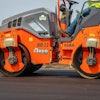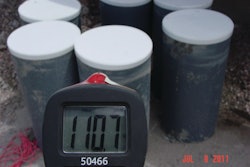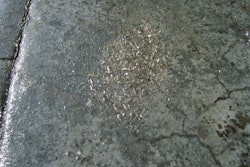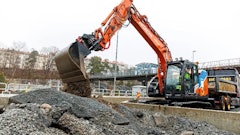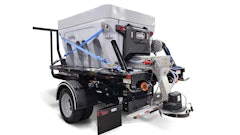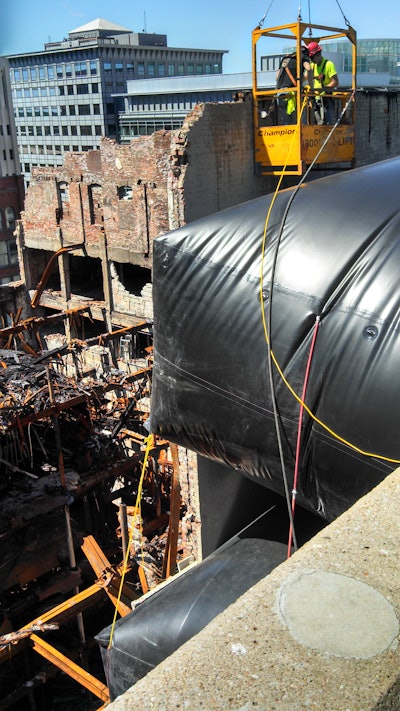
Information from this article was first published in Demolition Magazine and is being reused with permission from the National Demolition Association.
On March 29, 2014, the historical Younkers building in downtown Des Moines, Iowa, caught fire gutting the 230,000-square-foot building and creating a precarious structural integrity that posed a risk to neighboring buildings. The building would need to be demolished — and soon.
The CEO of NDA member Dore & Associates Contracting, Arthur P. Dore, was watching the story of the fire unfold on CNN and immediately called Dore’s vice president of special projects, Jeffrey C. Teagarden, who called the building’s owner and offered Dore’s services. Dore was “ideally suited” to the project, Teagarden says, because of the company’s expertise in both demolition and asbestos removal.
Significantly fire-damaged buildings require well-planned and coordinated demolition activities because the potential for collapse is so high. “They couldn’t let people back into surrounding properties due to the damaged structure,” Teagarden says. “The possibility for an unplanned collapse onto streets and sidewalks and adjacent structures was great.”
In the case of the Younkers building, there was a very large, unstable masonry wall on the north side. Vibrations or high winds could lead to a collapse. “The problem was the changed structural support,” Teagarden says. “The unsupported brick wall was significantly cracked, and a section of the wall was leaning toward an adjacent building.” The Dore team assessed the situation and determined they couldn’t work underneath the building to demolish it, nor could they create a shoring system. Both options were too unsafe.
That’s when Dennis Dore, the project supervisor, had an idea. He’d seen inflatable bags used to upright ships or lift vehicles out of the water — why not use those same physics to keep a weak wall in place? Before working in the demolition industry, Teagarden had worked in ship repair, and he agreed that the idea could work. They collaborated with a manufacturer to create 10 bags to the exact specifications of the void space they needed to fill: 50 feet long, 20 feet wide and 15 feet high.
In an interview with The Des Moines Register on the jobsite, Dennis Dore explained that the bags would take up the void air space and put pressure on the wall so it couldn’t kick back toward the adjacent parking structure. If the wall were to collapse, the only way it could fall would be into the hole of the burnt building. “To make everyone safe, we put the [inflatable bags in place] and pumped them up to keep pressure on the wall. Then we’ll take the wall down piece by piece. It’ll be a lot safer for everyone. We won’t have to worry about collapse,” he says.
The demolition began in May 2014 and wrapped up almost a full year later in March 2015. This particular fire-damaged building was too delicate of a project to rush its completion. To ensure the safety of the crew and the surrounding structures, much of the demolition, which was focused mainly on the east side of the building, involved picking apart structural members piece by piece, Teagarden says. The center of the building was removed floor by floor, and the west side interior was completely demolished.
The fire was so intense, Teagarden says, that some of the heavy cast-iron columns that made up the structure “were bent like bananas.” Typically, cast-iron shatters and will not bend, but the heat of the fire that ravaged the Younkers building was so hot that the columns became malleable.
The weak north wall wasn’t the only major challenge the three- to nine-person crew faced. There were two pedestrian skywalks that went into the Younkers building that they had to be careful not to damage, and three connecting pedestrian bridges from an adjacent parking garage had to be removed. “We couldn’t just start pushing walls in,” Teagarden says. “We had to be very careful. It was not a modern structure, and some perimeter beams were not tied into the center structure but just rested on perimeter brick walls.”
Additionally, the crew had to be meticulous about the building’s iconic Tea Room on the sixth floor, which needed to be preserved. Throughout the demolition process, Dore also helped with evidence, but the cause of the fire was ultimately pronounced undetermined.
Overall, the project was considered a resounding success. Despite the many hazards, no one was injured and the surrounding structures and buildings were not damaged as a result of the demolition operations. The Tea Room was salvaged, and a new development company has taken over what remains of the building, which will be turned into apartments and retail space.


